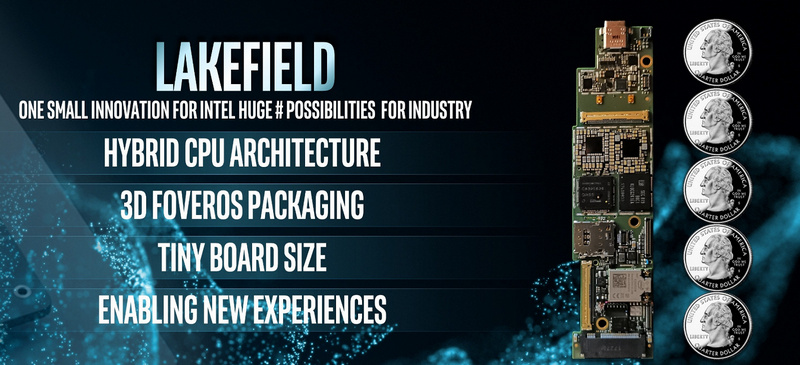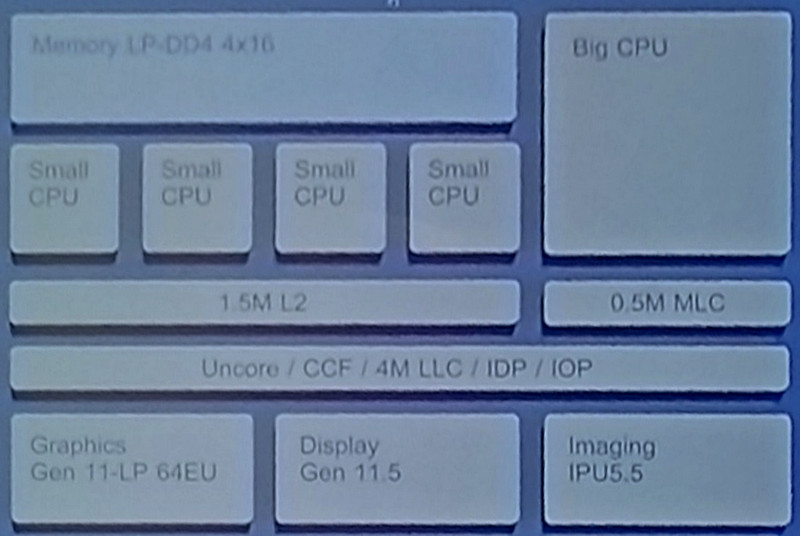Intel Lakefield: Atom + Core Hybrid Processor in 3D

With the benefit and joy of spending the New Year holidays, we return to our processor business. At the CES 2019, which took place on holidays, Intel showed something fundamentally new: Intel Lakefield, processor or SoC (as you wish, the manufacturer’s working name is “hybrid processor”), with the computational cores of two different microarchitectures, integrated graphics and memory - and all this wealth is combined together with Foveros technology. There is no way to go past this - and we will not.
First, a few words about the technology Foveros. The first information about it appeared at the beginning of last year, and the official presentation took place at the very end. The essence of Foveros is the multi-layered placement of chip crystals - one above the other. At the same time, service elements are located on one layer: power circuits, cache, input-output registers, and the other or others are placed under high-performance computing and other elements.

Compared to the passive backplane, Foveros reduces the physical distances between the crystals and increases the flexibility of the wiring diagrams. This results in two main advantages: reducing the overall size of the package and reducing the energy consumption of the hybrid SoC.

Intel Lakefield bulk packaging
As for Intel Lakefield, it is a structure of the following principal composition: one 10-nm “large” core from the Core Ice Lake processor, announced here a little earlier with its 4 MB MLC, four “small” Intel Atom cores (alive, smoking room!) using shared L2 cache of 1.5 MB in size, 4-channel memory controller (4x16 bits) with LPDDR4 support, 11th generation graphics core with 64 Execution Unit and 11+ video generation controller. All component parts are shown in the figure above.

Note along the main innovations in Intel Ice Lake (the main, “big” core of our 5-nuclear hybrid):
- Wi-Fi 6 support (802.11ax),
- Thunderbolt 3 support via USB-C,
- The ability to use LPDDR4X memory,
- Support for latest Intel technologies in AI and security.
What kind of devices is this processor made for? Intel does not hide that the order for it came from one of the company's partners. The task was set as follows: to ensure a certain performance with a minimum consumption in standby mode - no more than 2 MW. We will not spend time guessing about the identity of this partner (I’ll add a little: there are two options in the network), but we can say with a high degree of probability that we are talking about a mobile device such as a transformer, perhaps in some new form factor.
The last photo shows the dates when Intel Ice Lake processors are on sale: holidays (Christmas), that is, the end of 2019. Most likely, the commercial appearance of Lakefield is expected at the same time.
